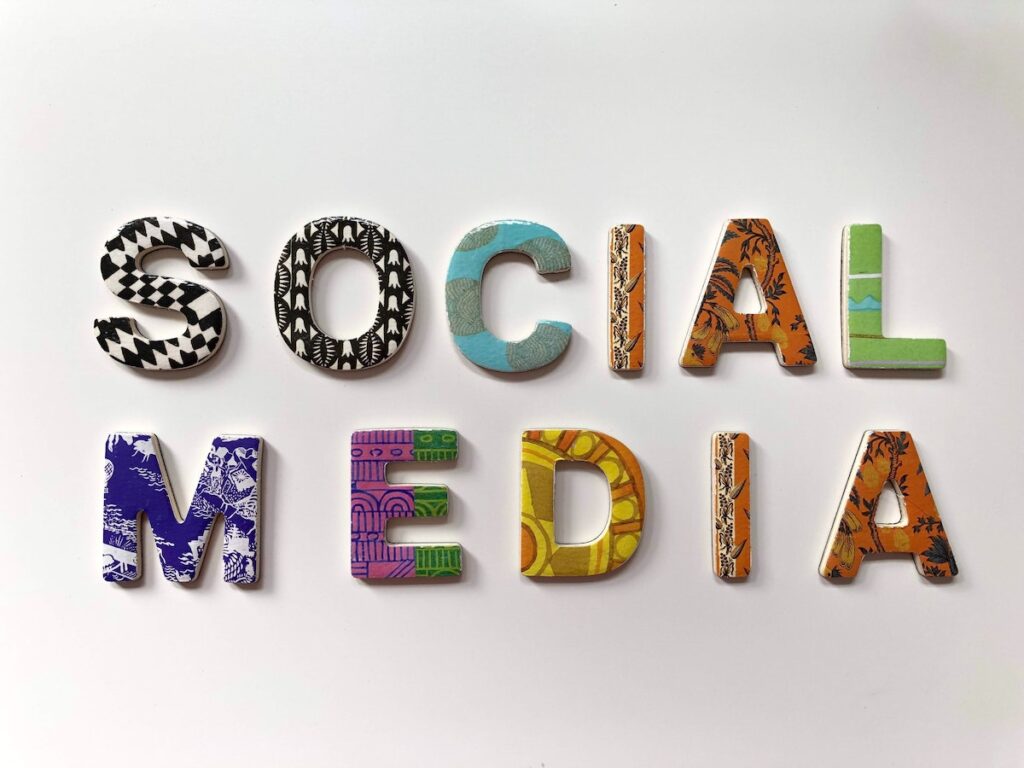
Social media, an all-encompassing term for ‘digital tools designed for social interactions’ (Moreno et al., 2013), is ubiquitous today. Platforms such as Facebook, Instagram, and Twitter can be used in a multitude of ways but primarily allow us to create content and connect with others. They are popular among people of all demographics, particularly young people (Perrin et al., 2019, Anderson & Jiang, 2018). Given that social media is so omnipresent, could it be linked with our mental health, including self-injurious thoughts and behaviours (SITBs)?
SITBs include suicide ideation, plans, attempts, and self-injury (Claes & Vandereycken, 2007). They are a major public health concern: self-injury is on the rise among young people, is a leading risk factor for suicide, and suicide is a leading cause of death worldwide (Morgan et al., 2017; Patton et al, 2009; World Health Organisation, 2019). Considering that social media use is also increasing, it is not surprising that it is of growing interest to researchers in this field.
Previous reviews have identified both positive and negative effects of social media use on mental health and SITBs (Odgers et al., 2020; Sedgwick et al., 2019; Glendenning et al., 2018). However, they have focused primarily on adolescent populations, on only one or a small subset SITBs, and at limited kinds of social media use. To better understand how social media and SITBs are linked it is important to consider the nuances associated with its use.
This systematic review and meta-analysis by Dr Jacqueline Nesi and colleagues (2021) aimed to address this gap by providing an overview of the current landscape of research on social use in relation to SITBs, and to examine associations between different aspects of social media use and SITBs across the lifespan.

Are social media and suicidal thoughts and behaviours linked? A new study looks at the nuances of social media use in association with suicidal ideation, suicide plans, suicide attempts, and nonsuicidal self-injury.
Methods
The authors conducted a literature search (in August 2020) on three databases: PsycINFO, MedLine, and CINAHL. Their search strategy included terms from prior systematic reviews in the area: e.g., ‘suicid*’ OR ‘self-harm*’ AND ‘online forum’ or ‘social media’. They defined social media as “digital tools designed for social interactions, including social networking sites/apps e.g. (Facebook), messaging apps (e.g., WhatsApp), online forums (e.g., Reddit), and video sharing sites (e.g., YouTube).” They checked the references of prior reviews and excluded studies about video games and online gaming.
Inclusion criteria:
- English language
- Peer-reviewed
- Social media use assessed separately from other constructs
- SITBs (self-injurious thoughts and behaviours) analysed distinctly from other constructs
- Each SITB was distinguished from other aspects of self-harm
- Social media use and SITBs assessed systematically
- Quantitative data present on the association between social media use and SITBs.
The authors recorded their search strategy in a PRISMA flow chart, and two independent authors screened the articles and extracted data. Information extracted included: type of SITBs (suicide ideation, plans, attempts, self-injury) and type of social media use (split into 7 constructs below):
- Cyber-victimisation: experience of being the victim of bullying via any type of social media
- Cyberbullying perpetration: engaging in cyberbullying of others
- SITB related social media use: exposure to SITB related content and generating SITB related content
- Frequency of social media use: time spent using social media
- Problematic use: excessive time and energy devoted to social media
- Sexting: sending or receiving sexually explicit content
- Social media importance: concern about social media in one’s life.
Lastly, the authors conducted a quantitative synthesis of findings. Odds ratios (OR) were used to calculate effect sizes. They considered sizes of 2.0 to be small, 3.0 to be medium and 4.0 to be large. Authors suggest studies with < 3 unique effects should be interpreted with caution. Moderator effects, heterogeneity and publication bias were assessed for the cyber-victimisation construct only due to the small number of effect sizes for the other social media constructs.
Results
Searching the databases yielded 1,947 records. After duplicate removal and screening, 61 studies were included in the quantitative synthesis. Most studies were cross-sectional and used self-report measures of SITBs.
The key result is that cyber-victimisation was the most studied social media construct and that there are positive associations of SITBs with cyber-victimisation. Effect sizes were medium to large: 2.93 for suicidal ideation, 3.07 for plans, 3.38 for attempts and 4.36 for self-injury. Moderator analyses for suicidal ideation found the effects were stronger among adolescents compared to adults. There was no evidence of publication bias.
Albeit from fewer studies, associations with cyberbullying perpetration, SITB-related social media use, problematic use, and sexting are also positively associated with SITBs. Effect sizes were generally in the small to medium range across the constructs. However, for sexting, effect sizes were large for suicide attempts (4.24) but this relied on only one unique effect. For SITB-related social media use effect sizes were large for suicide attempts (3.94) and suicide plans (3.78), with 5 unique effects for attempts and 3 for plans.
A small number of studies examined the frequency of social media use and social media importance, but there were no significant associations with SITBs (except for social media importance and self-injury) however all pooled effect sizes across both constructs were in the very small-small range.

The key finding of this review is an association between being victimised online and suicidal behaviour, thoughts and self-harm. However, most studies were cross-sectional in design which means the direction of the association is unclear.
Conclusions
There were positive associations with SITBs (self-injurious thoughts and behaviours) for most of the social media constructs examined. However, most studies were cross-sectional in design with varying effect sizes and a number of studies. Most of the evidence was for cyber-victimisation, though the lack of longitudinal studies for this construct means the direction of the association is unclear. There was no association for frequency of social media use on SITBs, however, there were a limited number of studies. Authors note:
Results highlight the importance of investigating a range of specific social media behaviours and experiences in relation to SITBs, and the critical need for more research in this area.

What do we mean by ‘problematic use’ of social media and how does it affect young people? Further longitudinal research is needed to investigate a range of social media behaviours and mental health outcomes.
Strengths and limitations
This is the first systematic review and meta-analysis to examine multiple constructs of social media use and their association with SITBs (self-injurious thoughts and behaviours), across the lifespan. This review is a timely step in helping to better understand the current landscape of the evidence.
A major strength of this review is that the authors pre-registered the protocol on PROSPERO (international prospective register of systematic reviews) and that two independent authors did both the screening and data extraction stage. They also did backward and forward citation searching of the included articles.
However, there are some limitations:
Although the authors comprehensively list their search terms within the article, it is not made explicit if they followed all of the updated PRISMA guidelines, which require the search strategies for each database to be available. Similarly, authors use a PRISMA flow chart to record the studies but including a PRISMA checklist in the supplementary material would be useful.
The authors note, a “vast majority of studies identified relied on self-report measures and cross-sectional designs, thus too few studies were available for moderator analysis”. Although cyber-victimisation was positively associated with SITBs, nearly all studies in this category were cross-sectional. Associations found in epidemiological studies do not necessarily imply causation, and the cross-sectional nature of the research highlights that it is not clear in which direction the association lies between SITBs and cyberbullying (i.e., does cyberbullying lead to SITBs or do SITBs lead to being cyber-bullied?). The authors did not use a tool to assess the risk of bias in the included studies (e.g., they could have used the Newcastle-Ottowa scale which is a gold standard tool for assessing the quality of non-randomised studies in meta-analyses). Due to these limitations, the findings should be interpreted with caution.
Not all social media constructs are clearly defined. For example, although ‘sexting’ might be an obvious term, its exact definition is not clear in the article. However, this is not a limitation specific to this review. Authors note this when discussing ‘problematic social media use’, they say “the manner in which problematic social media use is operationalized varies widely in the literature”.
Lastly, most of the studies are from the US, limiting generalisability to elsewhere in the world and in the UK. Although authors note “race and ethnicity were assessed in different ways across studies”, further information about the socio-demographics of the participants, including information on sexual orientation, would be useful to present (if available) in the demographic table or in the supplementary material. Given that SITBs are common among sexual minorities (Fox et al., 2018), future research should focus on how specific sexual minorities may be affected.

The definitions of social media behaviours vary widely in the literature, thus their impact on suicidal thoughts and behaviours should be interpreted with a pinch of salt.
Implications for practice
The link between social media and SITBs is complex. The key finding from this review is that there are associations of SITBs with cyberbullying, and this was stronger for younger compared to older people. This reinforces the importance of adolescence as a key stage in life, where mental health problems often first develop, and where social relationships may have a larger influence. However, nearly all studies for this construct were cross-sectional in design. Longitudinal research is needed to examine the likely bi-directional association, and limited studies exist for older populations.
Unfortunately, there were limited numbers of studies assessing social media constructs other than cyberbullying, and authors note that due to “the limited number of studies available that presented data across a range of racial and ethnic groups, race and ethnicity were not assessed as moderators in this review. It will be important for future studies to recruit diverse samples, and to clearly and consistently assess effects across racial and ethnic groups”. Future research focused on specific demographics of people is key.
In addition, we need to consider that social media is constantly evolving. As mentioned in this MQ podcast, blanket statements such as ‘screen time’ are ‘devoid of meaning’ and it is important to consider the individual person and the nuances around social media use. Looking at objective, interactional social media data could be an important focus for future work and potentially be easier to collect. Authors note that two studies were excluded from their review that looked at this kind of data, but that “multi-method work that incorporated objective social media data, is needed”.
I agree with the authors’ statement that future “research study designs should reflect a perspective that is agnostic as to whether social media use is helpful or harmful”. As a previous Mental Elf blog highlights, there are potential benefits of social media for suicide prevention. Therefore, whether social media is ‘good or bad’ for mental health is still up for debate.
Clinically, findings from this review suggest it is important for health professionals to inquire about social media use when supporting people who engage in SITBs, particularly young people. Lastly, due to the positive association between SITB-related social media use and SITBs, it is crucial to consider how reporting of SITB is conducted online. Samaritans have developed online safety resources to equip both practitioners and the general public with the skills to support themselves and others online.
To me, the key messages are:
- SITBs are associated with cyberbullying, but the direction of this association is unclear;
- Assessment of specific social media behaviours could be important for SITB prevention efforts;
- Future longitudinal research should focus on different demographics of people, consider the nuances of social media use, and use multi-method approaches that incorporate objective social media interactions.

Whether social media use is ‘good or bad’ for mental health is still up for debate. Researchers need to understand the role social factors such as race and ethnicity play in the equation.
If you need help and support now and you live in the UK or the Republic of Ireland, please call the Samaritans on 116 123.
Statement of interests
No conflicts of interest.
Links
Primary paper
Nesi, J., Burke, T. A., Bettis, A. H., Kudinova, A. Y., Thompson, E. C., MacPherson, H. A., … & Liu, R. T. (2021). Social media use and self-injurious thoughts and behaviors: A systematic review and meta-analysis. Clinical psychology review, 102038.
Other references
Anderson, M., & Jiang, J. (2018). Teens’ social media habits and experiences. Pew Research Center, 28.
Claes, L., & Vandereycken, W. (2007). Self-injurious behavior: differential diagnosis and functional differentiation. Comprehensive psychiatry, 48(2), 137-144.
Fox, K. R., Hooley, J. M., Smith, D. M., Ribeiro, J. D., Huang, X., Nock, M. K., & Franklin, J. C. (2018). Self-injurious thoughts and behaviors may be more common and severe among people identifying as a sexual minority. Behavior therapy, 49(5), 768-780.
John, A., Glendenning, A. C., Marchant, A., Montgomery, P., Stewart, A., Wood, S., … Hawton, K. (2018). Self-harm, suicidal behaviours, and cyberbullying in children and young people: Systematic review. Journal of Medical Internet Research, 20(4).
Kelly, Yvonne, Afshin Zilanawala, Cara Booker, and Amanda Sacker. “Social media use and adolescent mental health: Findings from the UK Millennium Cohort Study.” EClinicalMedicine 6 (2018): 59-68.
Moreno, M. A., & Kota, R. (2013). Social Media. In V. C. Strasburger, B. J. Wilson, & A. B. Jordan (Eds.), Children, adolescents, and the media (3rd ed.). Sage.
Morgan C, Webb RT, Carr MJ, Kontopantelis E, Green J, Chew-Graham CA, et al. Incidence, clinical management, and mortality risk following self harm among children and adolescents: cohort study in primary care. BMJ. 2017;j4351
Odgers, C. L., & Jensen, M. R. (2020). Annual research review: Adolescent mental health in the digital age: Facts, fears, and future directions. Journal of Child Psychology and Psychiatry, 61(3), 336–348.
Patton GC, Coffey C, Sawyer SM. et al (2009) Global patterns of mortality in young people: A systematic analysis of population health data. The Lancet 2009, 374(9693), 881–892.
Perrin, A., & Anderson, M. (2019). Share of US adults using social media, including Facebook, is mostly unchanged since 2018. Pew Research Center, 10.
Sedgwick, R., Epstein, S., Dutta, R., & Ougrin, D. (2019). Social media, internet use and suicide attempts in adolescents. In Current Opinion in Psychiatry (vol. 32, issue 6) (534–541).
World Health Organization. Suicide worldwide in 2019. Retrieved from https://www.who.int/teams/mental-health-and-substance-use/suicide-data
Photo credits
- Photo by Alexander Shatov on Unsplash
- Photo by Merakist on Unsplash
- Photo by Rendy Novantino on Unsplash
- Photo by Priscilla Du Preez on Unsplash
